![]()
Sun, July 29, 2012 | RubinReports | By Barry Rubin
William Harris, professor of politics at the University of Otago in New Zealand, is one of the world’s leading experts on Lebanon and Syria. His new book is Lebanon: A History, 600-2011, which, as the title suggests, narrates the history of that land and country over the centuries. But Harris also follows the contemporary regional events very closely. He is interviewed here by PJ Media Middle East Editor Barry Rubin.
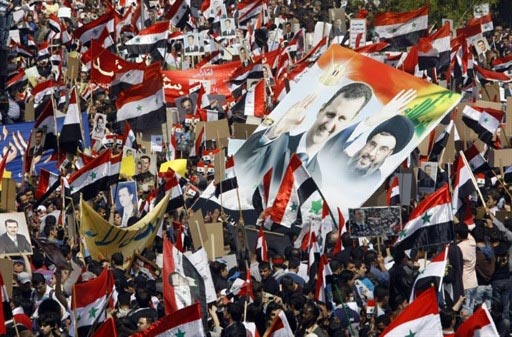
Syrian president Bashar al-Assad and Hezbollah leader Hassan Nasrallah on the same poster during pro-regime demonstrations. (Image via thearabdigest.com)
BR: You’ve just written a comprehensive history of Lebanon. What makes Lebanon a unique country and what are its most important special features?
WH: Lebanon contains virtually the full religious diversity of the Arab world in a space the size of Connecticut. Christian, Muslim, and Islamic-derived sectarian communities with histories going back to early Medieval times are the principal identity markers in the country. The balance is unique: Sunni and Twelver Shia Muslims are about 30% each; Christians (all Christian sects) are approximately 35%; and Druze (an offshoot of Isma’ili Shia Islam) are 5%.
Nowhere else do Sunni, Shia, and Christians come together in such equivalence, and the demographic standoff is expressed in a unique multi-communal political system of defined shares in government, parliament, and bureaucracy for each sectarian group. The system worked best in the 1960s and has decayed in the subsequent decades of turbulence, but Lebanese remain more accustomed to freedoms than any other Arabs.
Lebanon also has the largest and most longstanding global Diaspora of any Arab country. Lebanon, cobbled together as a territorial state by France in 1920 with the Ottoman province of Mount Lebanon as its core, is also a vital little strategic arena in the early 21st century, sandwiched between Israel and Syria and attracting the close attention of both the West and revolutionary Iran.
BR: A key factor in recent Lebanese history has been the rise of the Shia community, and particularly of Hezbollah, to power. How do you explain this development?
WH: The Shia were the fastest growing Lebanese community between the 1940s and 1990s, and increased their proportion from about 20% to about 30%. In that period they were the poorest and most marginalized group and their elite was subsidiary to the Maronite Catholics, the leading Christian sect, and the Sunni Muslims. In the chaos of Lebanon’s war years after 1975, powerful movements and militias emerged in this discontented community — Amal and Hezbollah — to assert a more central role.
Hezbollah moved ahead after 1990 after the Maronites blew themselves apart in the last outburst of the war years, and Syria imposed its hegemony that lasted fifteen years, blessed by the United States. Syria and Islamist Iran backed Hezbollah, which gained an increasing de facto political advantage in the country because of its struggle with Israel. Its perpetuated militarization was justified by that struggle while others disarmed, and hegemony within its community was enabled by both leadership of the struggle and by Iranian financial infusions.
Nonetheless, Hezbollah’s advantage began to become more contested as the years passed after Israel’s withdrawal from southern Lebanon in 2000. The Shia demographic surge has faded, the non-Shia two-thirds of Lebanon has become largely hostile, and association with the Syrian and Iranian regimes has vented an increasingly foul odor in the nostrils of other Lebanese.
BR: What are the relations of Hezbollah and some of the leading Sunni politicians to Syria, and how are they being affected by events there?
WH: The Syrian regime of Bashar Assad has been Hezbollah’s strategic ally and physical connection to Iran. Hezbollah has chosen to commit itself to Bashar’s brutal repressive campaign against the Syrian opposition since early 2011, and it has thereby earned the deepening and now probably implacable hatred of the majority of the Syrian people. If we assume that the Syrian regime is doomed, Hezbollah’s options are to pull as much weaponry as it can across the border, even including chemical munitions, before supply lines are no longer viable, and perhaps to participate in trying to prolong regime elements in a rump of Syria’s territory. In other words, to contribute to Syria’s collapse as a state. Such a posture would of course mean conclusive divorce with the Sunnis of both Syria and Lebanon.
As for Lebanese Sunni politicians, most of course quietly hope for the political advantages that would come from a new Syrian regime. Prime Minister Najib Mikati, however, is in a special position of embarrassment having done his deal with Hezbollah and Syrian President Bashar Assad to head the present Lebanese government on the very eve of the Syrian uprising.
BR: How does Iran figure into Lebanon today?
WH: The Iranian regime is tied to Hezbollah and the present Hezbollah-guided Lebanese government. Shia Islamist Iran is feared and loathed by the great majority of Sunnis and Druze. Despite Hezbollah’s significant extension into the Christian sector through its ally Michel Aoun, the Iranian Islamist regime can have no serious lasting standing among Christians. Shia outside the Hezbollah camp also have no time for the current rulers in Tehran.
In other words, the Iranian regime has a narrow base in Lebanon, being dependent on a faction that perhaps amounts to 20% of Lebanese. This precarious situation would become worse with a collapse of the Syrian regime, Iran’s strategic partner and route to Lebanon. Iran would presumably have to fall back on Beirut’s airport and Lebanese ports to supply Hezbollah, which would not be appreciated by most Lebanese.
BR: Would it be correct to describe the opposition as being an alliance of Sunni Muslims, Christians, and sometimes the Druze, and what are their positions and goals?
WH: The opposition encompasses the overwhelming majority of Sunnis, at least half the Christians, and most Druze regardless of the perambulations of Druze leaders. Senior Druze politician Walid Jumblatt is an interesting case; he has been a forthright Lebanese voice against the crimes of the Assad regime since 2011 yet his party continues to sustain the Mikati government, Hezbollah’s vehicle.
In political terms, the opposition is an alliance of Sunni Muslim and Christian leaders who want to resurrect a mercantile Lebanon somehow insulated from regional turbulence, and its support base includes most Druze and a significant minority of Shia. However the opposition does not really have a coherent vision of a new Lebanon and many Sunnis, frustrated by weak leadership, are drifting toward Sunni Islamist militancy.
Christians in general and Maronites in particular are split between the two major political camps. Drawing on the resentments — especially of less well-off Maronites — toward the Sunni bourgeoisie and Sunni Arab oil state money, Michel Aoun took a substantial segment into alignment with the Shia of Hezbollah. However, Christians are also sensitive about the pretension and pressure of Hezbollah and that party is not mentally well-equipped to interpret the shifting tides. The Christian mood is fickle and still influenced by rancor from the poor outcome for Maronites of the late 20th century war years.
Apart from the usual personal agendas, opposition politicians — targeted in the post-2005 political murder campaign (which they believe was the work of Assad and Hezbollah) — want the downfall of the Syrian regime, the removal of Hezbollah weapons, and constriction of Iran’s involvement in Lebanon. They are short on reassurances to Shia Lebanon on building a positive partnership in a restructured political order.
BR: How do you view Western and particularly U.S. policies toward Lebanon in recent years, and what changes would you suggest?
WH: Given the entrenched political and strategic realities and interlocking tendencies toward inertia in the Levant, I am skeptical about the effect of any U.S. policies (and still more skeptical about the rest of the West). One positive move was the multilateral push to bring accountability for political murder after the February 2005 assassination of Rafik Hariri, culminating in the Special Tribunal for Lebanon. Of course as yet there is no actual accountability, which I suppose buttresses the first point, but the West at least made an attempt to blunt impunity and to bring the rule of law back to Lebanon.
Otherwise, the U.S. could at a minimum avoid repeating such self-evidently stupid policies as the Obama administration’s drive in 2009 to “engage” Bashar Assad, which achieved derision from Assad and demoralization of the West’s friends in Lebanon. For the immediate future, assuming the Syrian convulsion drags on and the United States remains resolute in sticking to the sideline, Washington needs to be alert to attempts by the Bashar/Hezbollah/Iran machine to change the scenery by embroiling the Israelis in Lebanon. From so many angles the earliest possible demise of the Assad clique is the national interest of the United States.
BR: If the Assad regime in Syria falls, how will this affect Lebanon?
WH: Lebanon is completely hostage to developments in Syria. The detailed effects depend on how long the downfall takes and whether or not a coherent pluralist new regime can be stabilized in Damascus. All downfall scenarios are bad for the positions in Lebanon of Hezbollah and Iran, but a fragmented and anarchic Syria would give these parties some continued room for maneuver.
Early establishment of a new pluralist Syria would reduce the significance of Hezbollah weaponry in the Lebanese domestic equation and give the opportunity for real national dialogue in the context of more balanced power relations. The result would depend on leadership qualities and putting aside of absolutism, rancor, and superiority complexes. The signs are not encouraging.
It is possible to imagine a scenario in which Lebanese remain stuck in their sectarian bog while a new Syria forges ahead. The Syrian uprising has not been on a sectarian basis despite the strenuous efforts of the Assad regime to goad it into sectarianism and the distortion of Syria’s affairs in the Western media. Nonetheless, for both Lebanon and Syria the horizon darkens as the horrors and devastation in Syria become more protracted.



 RSS
RSS


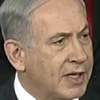
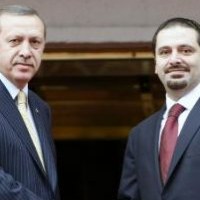
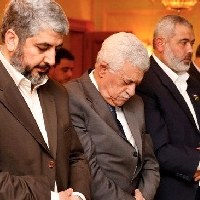
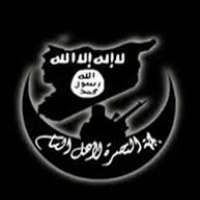




Latest Comments
Hello Mike, Thank you for your positive feedback to the article. I felt there wasn’t too much critical analysis of ...
Thanks for this considered and well constructed article. A follow up article on the manner in which the editorial contro...
THE CLUELESSNESS OF CLAIMING THAT OBAMA'S MIDDLE EAST POLICIES WERE A FAILURE CANNOT BE FURTHER FROM THE TRUTH, WHAT THE...
As long as Obama is the president of the usa do not trust the us government......
Thank you for an good read....